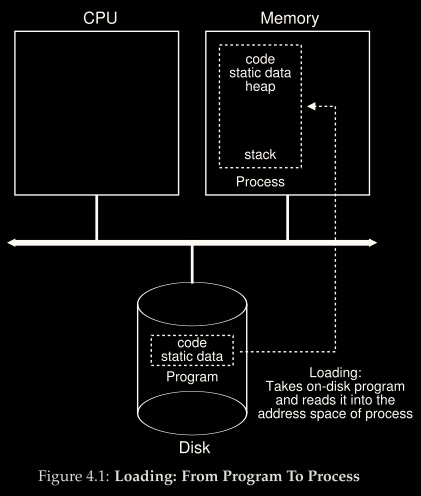CS-537: Introduction to Operating Systems #
My CS-537: Introduction to Operating Systems course notes from OSSU curriculum.
History #
Just Libraries #
OS would provide API. Jobs set up and then run in a batch by the operator. Computers were not interactive.
Protection #
The idea of system call invented by Atlas computing system. Instead of providing OS routines as a library (procedure call), special instructions to transition into a more formal, controlled process.
graph LR U(User Mode) K(Kernel Mode) U-->|trap|K K-->|return-from-trap|U
Multiprogramming #
I/O devices were slow, having a program wait CPU was a waste of time. Memory protection and concurrency became critical in the presence of I/O and interrupts. Unix was introduced inspired by TENEX and Berkeley Time-Sharing System.
Modern Era #
DOS didn’t think memory protection was important; thus, a malicious application could scribble all over memory. Mac OS(v9 and earlier) took a cooperative approach to job scheduling; thus, a thread that accidentally got stuck in an infinite loop could take over the entire system, forcing a reboot.
The Process #
Time sharing allows OS to share CPU resource, by context-switch (stop a program to run another). A scheduling policy let OS to decide which program to run.
Address space is the memory the process can address, registers are also part of process’s machine state. For example program counter (PC, or instruction pointer IP) tells which instruction to execute next, stack pointer and associated frame pointer are used to manage the stack for function parameters, local variables and return addresses.
In early OSes loading done eagerly, modern OSes perform it lazily by paging and swapping.
Process States #
graph LR R(Running) B(Blocked) E(Ready) R-->|Descheduled|E E-->|Scheduled|R R-->|I/O initiate|B B-->|I/O done|E
Running: executing instructions
Ready: ready, but OS has chosen not to run
Blocked: not ready. I/O request etc.
These decisions are made by OS scheduler.
| Time | Process0 | Process1 | Notes |
|---|---|---|---|
| 1 | Running | Ready | |
| 2 | Running | Ready | |
| 3 | Running | Ready | Process0 init I/O |
| 4 | Blocked | Running | Process0 is blocked, |
| 5 | Blocked | Running | so Process1 runs |
| 6 | Blocked | Running | |
| 7 | Ready | Running | I/O done |
| 8 | Ready | Running | Process1 now done |
| 9 | Running | – | |
| 10 | Running | – | Process0 now done |
Process API #
Shell run code after the call to fork() (to create a new child process by copying parent) but before the call to exec() (to run the command); this code can alter the environment of the about-to-be-run program, and then waits for the command to complete by calling wait(). When the child completes, shell returns, ready for next command. This enables features like input/output redirection, pipes.
Each process has a name, in most systems a number, process ID (PID). Control is available in the form of signals to stop, continue, terminate.
The control is encapsulated by the notion of user, whom can only control their own processes. A superuser can control all processes.